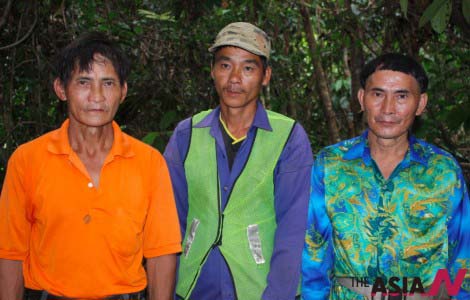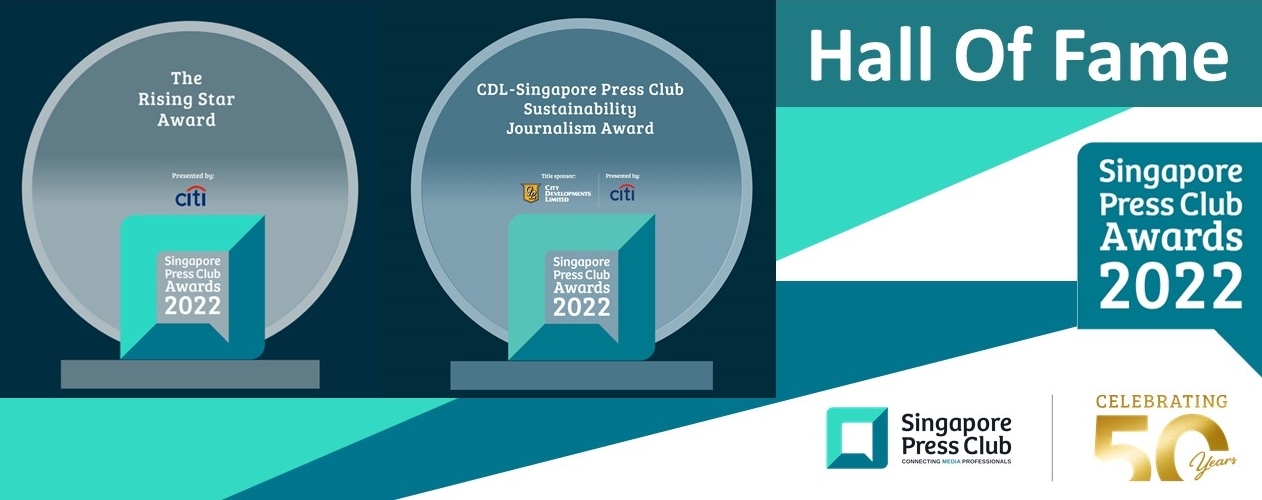A Rightful Place for the Indigenous People in the Heart of Borneo

IT could well have been a plot from Joseph Conrad’s novel, Heart of Darkness. Except that, instead of the African Congo, the clashes between the aboriginal inhabitants and timber tycoons were taking place in the Borneo jungles of South-east Asia.
And what an unequal clash of cultures that was breaking out in the 80s and 90s: the loggers, wielding chain-saws, unleashed bulldozers to to obliterate the heaths of the Penans and Dayaks while the natives had only bamboo poles and blow-pipes to square off with the invaders.
The protesters set up road blockades but they were charged by police called in by the government and the timber operators.
This saga of aborigines taking on capitalists in eastern Malaysia — and against migrant plantation operators as well in Indonesian Kalimantan province — was played out on the international stage when Swiss activist Bruno Manser took up the Penans’ cause.
The decades-long saga continues today with the Penans challenged to fit in within the new nations pressing ahead with a redrafted agenda described as sustainable development and conservation.
This comes in the wake of the Heart of Borneo (HOB) Initiative launched in 2007 by Indonesia, Malaysia and Brunei, a new brand name for green economics that the world is taking notice.

Brand HOB covers 22 million hectares or 30 per cent of the Borneo forest territories traversing the three states which, it is said, will be managed on sound sustainable principles – a signal turnaround from decades of plunder and exploitation that threatened the survival and well-being of the indigenous peoples and the iconic orang utan, the last of Asian great apes.
For example, in Sabah, once dubbed the “wild east of Malaysia” for its free-wheeling timber logging operations and oil palm plantations, one million ha of its choicest forested lowlands — the natural habitat of the orang utan — had been transferred to plantations.
Its sister state, Sarawak, fared worst, having lost 90 per cent of its primary forests through extensive logging to meet world demand for hard-wood timber.
In Kalimantan, millions of acres of forest have been cleared by contract workers from other regions of Indonesia for commercial rubber and palm oil plantations.
The rapid loss of Borneo’s forest cover from run-away commercial exploitation has rung alarm bells even as the international community grapple with the threats of global warming.
For the Borneo forests host six per cent of the globe’s biodiversity, including the orang utan and the world’s largest flower, the Raffliesia.

It has been estimated that destruction of forests worldwide has contributed 15 to 25 per cent of man-made generation of greenhouse gases.
The HOB partner-countries have come round to seeing themselves as co-stewards of the forests reserves and acting to protect and preserve for future generations and the global community.
One key component of their new strategy is to recognise and resolve the demands and problems of their indigenous peoples, including customary land rights and culture.
It has not always been the case. The Penans had been under pressure to abandon their jungle life-style and enter the mainstream of society. A telling point was made by former Environment and Tourism Minister James Wong of Sarawak in his poem:
“O Penan – Jungle wanderers of the Tree
What would the future hold for thee?….
Perhaps to us you may appear deprived and poor
But can Civilization offer anything better?
And yet could Society in good conscience
View your plight with detached indifference
Especially now we are an independent Nation
Yet not lift a helping hand to our fellow brethren?
Instead allow him to subsist in Blowpipes and clothed in Chawats (loincloths)
An anthropological curiosity of Nature and Art?
Alas, ultimately your fate is your own decision
Remain as you are – or cross the Rubicon!”
Such pressure for assimilation had eased with the International Labour Organisation convention outlawing such practices for indigenous people.
Today the Penans and Dayaks are turning from confrontation to litigation to defend their ancestral land rights enshrined in a treaty against violations by timber companies and the state government. With the help of foreign and local volunteer “E-Warriors”, they have carried out mapping of their territories and filing cases in the courts.
From 2001 to 2010, over 1,000 legal suits were lodged with the Malaysian Human Rights Commission (Suhakam) against the Sabah state authorities. Around 700 cases involved land application for native titles, loss of access and curbing or breaching customary rights.
In 2001 the Dayaks won a landmark case against Borneo Pulp & Paper and the Sarawak state government for violation of Native Customary Rights.
According to social scientist Fadzilah Majid Cooke, the real challenge is how to achieve “harmonising’’ of these diverse and competing social, economic and environmental goals without blaming any of the stakeholders concerned.
In terms of conservation, for instance, the indigenous peoples’ claims to ancestral land rights in the state forest reserves may be seen as running counter to the common good.
Then again, HOB initiatives to consult the estimated 400 local communities on development and conservation issues might not be smooth-going, said Fadzilah Cooke. The authorities could expect a “more questioning indigenous society and (must not) regard them as anti-government”.
HOB has made a good beginning with surveys that had garnered data on the livelihood and land rights of the villagers living within or near forest reserves. The information will help the authorities in deciding zoning and land use options for protecting and managing forest reserves.
This is part of a multi-pronged plan that included scientific expeditions to forest reserves to rate the health of the eco-systems. In Sabah, they yielded heartwarming rediscovery of the Hose’s Langur, one of the 25 most endangered primates.
A stellar effort is placing 240,000 ha of production forest reserves in Ulu Segama Malua, Sabah, under Sustainable Forest Management (SFM) status as a long-term habitat for orang utans.
Conservation aside, a key thrust of HOB is to build up timber resources and improve methods of harvesting timber for export as a vital source of revenue for development.
The measures include phasing out short-term logging licences and carry out independent third-party auditing of logging under long-term licences to ensure they meet sustainability standards.
HOB is also capitalising on the potential of the Borneo rain forests as a huge carbon sink to reduce global warming. This has opened up opportunities like the Reduced Emission from Deforestation and Degradation (REDD) carbon trade-off schemes.
Indonesia, the world’s third largest producer of greenhouse gases, has secured a US$1 billion pledge from Norway to help it reduce its carbon emissions by cutting back on primary forest and peat land concessions for its pulp wood and palm oil industries.
Malaysia is making a strong case for carbon money for bringing 2 million ha of Sabah’s production forests under SFM —a formula used by the UN Forum on Forests to tackle the interlinked issues of conservation, biodiversity and climate change as well as economic development. It hopes to secure REDD funding It has restored up to 200,000 ha of degraded forest lands and put state land under permanent forest reserves.
On a trans-boundary basis, Brunei has initiated a peat lands management project. The HOB has also set up field outposts as well as work with WF and TRAFFIC and International Union or Conservation of Nature on programmes to combat poaching of wildlife.
Over the five years since its inception, the HOB Initiative has laid an impressive groundwork for sustainable management and conservation of the Borneo forests and is poised to exploit new revenue opportunities such as supplying clean water, ecotourism and cultural services.
With all the potential for green development, what is in it for the Penans and Dayaks? To get a piece of the action, the Alliance of Indigenous People of the Highlands of Borneo, or FORMADAT, formed in 2004, is offering a “highlands commons” model of sustainable development.
Social scientist Cristina Eghenter said FORMADAT leaders are keen to engage in trans- boundary ecotourism and organic farming that is adapted to the fragile eco systems of the highlands.
They also want to ensure that their cultural traditions are not eroded even as roads, airstrips and e-telecentres expose their members to the outside world.
This may be seen as a test case on how far the HOB could go in aligning, or at least in accommodating, the needs and demands of the indigenous communities.
As recently as 2009 Penans in Sarawak had protested against new palm oil and acacia plantations as mono-cultures that would erode the biodiversity of their forests. And, in 2010, they demonstrated against the Murum hydro-electric dam that had led to flooding of their villages.
Such friction remains and could continue, given the greed of loggers, the lure of quick-paced commercial development and the disadvantages the indigenous people face in fighting for their interests. The Heart of Borneo’s promise of a better future for all would be set nought if the stakeholders fail put their act together.





One Comment